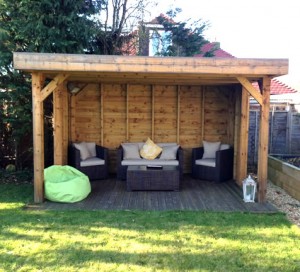Panorama Design Software Program

If the land is steep, swales may not be an excellent choice for the positioning. Heavy clay can buckle under the weight of the water and cause land destabilization.
A swale might help capture water where it is being wasted so as to irrigate a planting area. From gazebos, pillars and gates all designed to bring your landscape to life. Our experienced team specializes in the design and building of customized pool decks, grill centers and out of doors kitchen areas. Custom design and constructed luxury swimming pools that are constructed to suit your panorama and vision. Measure the bottom of the subsequent row of timbers for the dowel holes.
Landscape architects and permaculture designers could be really helpful in this case. It’s possible the deck in its current form just isn’t a good match for a correct water answer. It’s important to be open to what a long-lasting answer would appear to be. I’d actually like hold the swale grass or it will stick out even worse separating my yard. My drawback is the swale would separate the steps coming down off the deck and my back yard. I am a numbers man myself and trying to determine calculations for swales I’m designing currently and those I’ll be designing sooner or later. We have been taught in our PDC to calculate catchment x max rain in 24 hours.
If you do attempt to construct a swale, you’ll want to place it as uphill as possible. I was wondering the identical factor once we filled in the trench of our swale. It seems like it would hinder the function of the swale, however in our case it didn’t. I think so long as your swale has an overflow–like our rain backyard or the more traditional spillway–the swale ought to work okay. Before filling in the trench, make certain that it could possibly deal with an everyday rain event with out overflowing. If it could possibly’t, it could be advantageous to make the ditch wider before filling it in.
Berm Building Suggestions
My experience is that mulching a mucky area invites mosquitoes. A swale could be a good solution right here, however with out seeing the property, I can’t assure it.
How Do I Test My Backyard Soil?

By observing your system, you’ll have the ability to notice when a swale that was as soon as properly functioning begins to overflow with water. (I wouldn’t guess it might be needed more usually than as soon as each 5-10 years). Always think about where the water will go if the swale overflows. Have redundancy inbuilt that may handle a 100-yr rain occasion. I advocate planting perennials that will grow permanent, thirsty roots to stabilize the system. In desert areas, plantings are usually positioned within the swale trench, while in non-desert areas, it’s typical to plant the berm.
Our first swale is nearly 300 ”˜ long (farm scale!) and we ended up filling it with downed alders from an ice storm turning it right into a bioswale. That swale is out in zone three and the berm is planted out to fruit bushes. Just noticed this reply when I was going over your submit again! Both are working amazingly for our crazy Arizona rains . I’ve accomplished some trenching from the roofline to the closest large plants too and that seems to work nicely out right here too. This is superb, I just began some passive rain catching strategies and it’s working really well. Our house before we bought it and commenced our front yard project .
Take that number and divide by 24 to get max hourly rainfall. Then we divide by 60 to get minute rain and 60 again to get second rainfall. We need this information to calculate the amount of runoff we will need to allow to outflow throughout extreme events. What I’m stuck on is the size of the spillway to keep away from erosion even throughout these extreme events. I missed the half about why you’re removing grass. I wouldn’t do this unless you’re planting the realm with deep-rooted, rain-loving crops.
